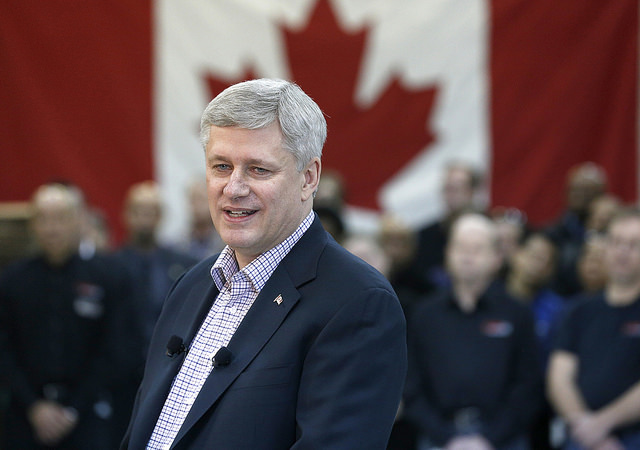The Globe and Mail reports, “Canada has historically matched its [greenhouse gas emission] targets with those set south of the border, a bar that was raised late last month when the U.S. said it would cut emissions by 26 per cent to 28 per cent by 2025, relative to 2005 levels, and is on track for an 80-per-cent cut by 2050. However, at a media event in Winnipeg on Thursday, [Prime Minister Stephen] Harper suggested the lock-step approach with the U.S. is about to end.”
This direction would be a departure from Harper’s August 2013 offer to U.S. President Obama of “joint action to reduce greenhouse gas emissions in the oil and gas sector” if Obama approved the Keystone XL tar sands pipeline. It would also be a departure from the notion that since Canada and the United States are NAFTA partners that climate policies should be harmonized, the logic employed when vehicle emission standards were put in place. Harper now says, “It’s unlikely our targets will be exactly the same as the United States’. But they will be targets of similar levels of ambition to other major industrialized countries.”
But just last month, Open Democracy reported, “Cambridge University number cruncher Chris Hope concluded that if the European Union countries cut emissions by 40 percent by 2030 (as they have pledged), if the rest of the developed countries follow the U.S. commitment, and if the developing countries follow China’s promise, the most likely result will be a global temperature rise of 3.6 degrees Celsius in 2100.” This despite the reality that 2 degrees Celsius is the limit that cannot be exceeded to prevent climate change from having devastating consequences.
Apart from post-2020 pledges, the Harper government has a poor record with respect to earlier climate pledges. The Globe and Mail notes, “A report last week prepared by Environment Canada suggested this country had little hope of meeting its international commitment to reduce greenhouse-gas emissions by 17 per cent from 2005 levels by 2020. That pledge was made by Mr. Harper at a climate summit in Copenhagen six years ago.” In reality, Canada’s emissions could be 20 per cent in excess of that target. It should also be remembered that when Harper formally withdrew from the Kyoto Protocol in 2011, Canada’s emissions were 30 per cent above the target of per cent below 1990 levels by 2012.
While the United Nations had set a deadline of March 31 for countries to submit their post-2020 targets to be negotiated at the UN climate summit this December, Harper has suggested Canada’s targets will be released in May.
Scientists have estimated that the pledges now being made by countries around the world would still mean 20 billion tonnes of carbon emissions in excess of what is safe. Harper’s support for the Energy East pipeline (which would be responsible for about 32 million tonnes of greenhouse gas emissions a year), the Trans Mountain pipeline (at about 270 million tonnes over 35 years), the Liquefied Natural Gas agenda (given just five LNG terminals would add 28 million tonnes a year), the Site C dam (at 150,000 tonnes a year) would only serve to worsen this climate deficit.
The Harper government’s agenda of tar sands expansion, LNG development and pipeline construction is clearly incompatible with the math of climate change. The federal government that Canada elects on October 19 will be the government that negotiates Canada’s post-2020 emission reduction pledge just six weeks later at the UN climate summit in December. It’s time for a change.
Photo: pmwebphotos/flickr



